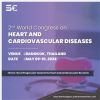Research suggests that a groundbreaking nanomaterial, possessing significant potential to address global challenges, may be further developed with minimal risk to human health. The study reveals that the controlled inhalation of a specific type of graphene, the thinnest, strongest, and most flexible material globally, does not exhibit short-term adverse effects on lung or cardiovascular function. The study is published in Nature Nanotechnology.
In the initial controlled exposure clinical trial involving humans, researchers utilised thin, ultra-pure graphene oxide, a water-compatible variant of the material. The study emphasises the need for additional research to determine the potential effects of higher doses of graphene oxide or alternative forms of graphene. Additionally, the team aims to investigate whether prolonged exposure to this material, which is thousands of times thinner than a human hair, poses additional health risks.
The heightened interest in graphene, isolated by scientists in 2004, has led to its designation as a 'wonder' material, with potential applications spanning electronics, phone screens, clothing, paints, and water purification. The material is actively explored worldwide for targeted therapeutics against conditions like cancer and in the development of implantable devices and sensors. However, before medical applications can proceed, rigorous testing for potential adverse effects of nanomaterials is imperative.
For the purpose of this study, researchers from the Universities of Edinburgh and Manchester enlisted 14 volunteers who underwent carefully controlled exposure and clinical monitoring. Volunteers breathed the material through face masks for two hours while cycling in a specialised mobile exposure chamber. Lung function, blood pressure, blood clotting, and inflammation were measured before exposure and at two-hour intervals. Subsequent sessions involved controlled exposures to different sizes of graphene oxide or clean air for comparison.
Results indicated no adverse effects on lung function, blood pressure, or the majority of other biological parameters studied. While researchers observed a slight suggestion that the material might influence blood clotting, they have highlighted that this effect was minimal.
Findings from the study demonstrate that pure forms of graphene oxide, with specific size distribution and surface characteristics, can be developed with minimal risk to human health.
These findings are quite optimistic about this discovery's potential to pave the way for new devices, treatment innovations, and monitoring techniques. However, larger studies over an extended timeframe are needed to better understand the safe utilisation of nanomaterials like graphene.
Source: University of Edinburgh
Image Credit: iStcok























